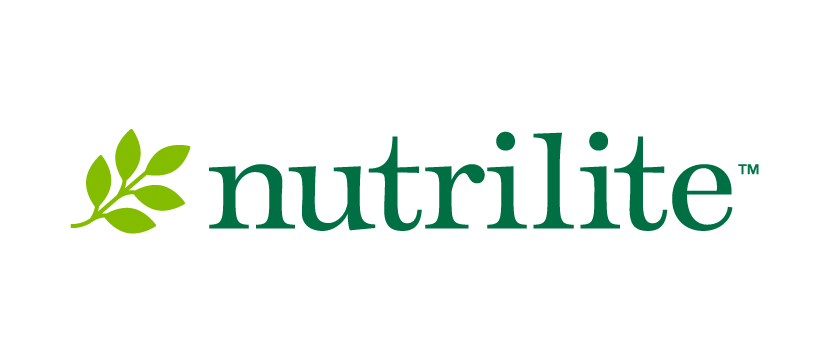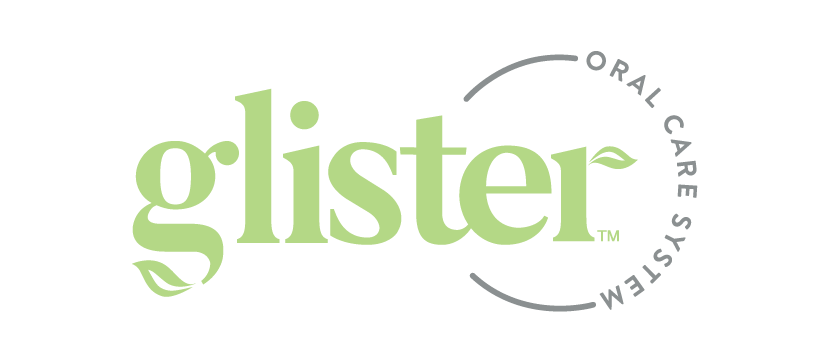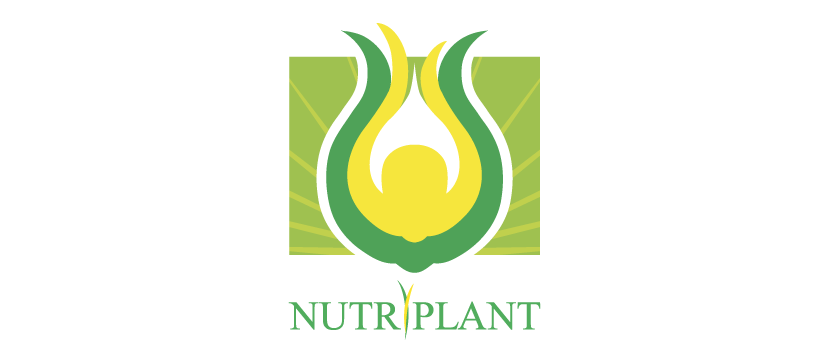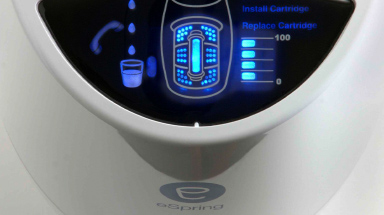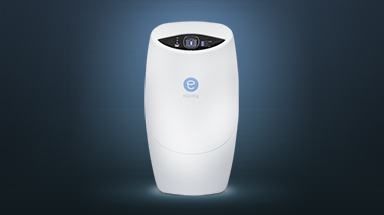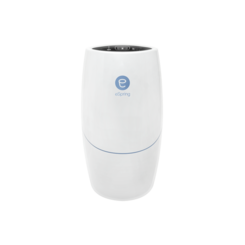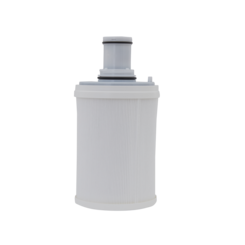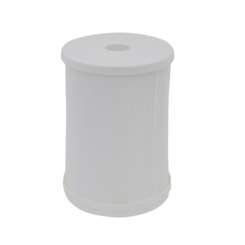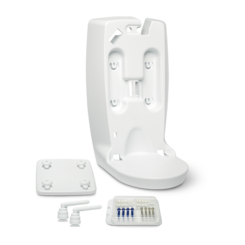eSpring is the world's number 1 selling brand of kitchen home water treatment system!*
Enjoy clean and safe drinking water at home anytime! This in-home water treatment system is designed with cutting-edge clean water technology.
Key Features:
• eCoupled Wireless Power – non-contact transmission of power supply
• Smart Chip – LED display & audio cues
• Advanced Carbon Filter - reduces potential health-effect contaminants yet allowing beneficial minerals like calcium and magnesium to pass through.
• UV Technology – Kills 99.9% waterborne bacteria and viruses
*Based on Verify Markets Study 2018
READ LESS{{ product.retailPrice | formattedPrice }} Retail Price
PRODUCT DETAILS
Enjoy clean water without the worry! This in-home water treatment system, with a filter cartridge that incorporates a patented carbon block filter and uses “Instant On” technology UV lamp, reduces potential health effect contaminants yet allowing beneficial minerals like calcium and magnesium to pass through.
PRODUCT OVERVIEW
Resources
FAQ
‘Activated carbon’ is carbon that has been processed to create pores within the carbon itself. This increases the carbon’s surface area. To create an ‘activated carbon block’ the activated carbon is mixed with binder and compacted to form a porous block. When water passes through the activated carbon block filter it traps chemicals and particulate. Particulate gets trapped between carbon particles; a process known as mechanical filtration. On the other hand, chemicals get trapped in the pores of the carbon particles themselves; a phenomenon known as adsorption. As porosity and surface area of the carbon increase, so does its ability to filter chemical contaminants.
Activated carbon readily bonds to and adsorbs organic carbon-based compounds such as pharmaceuticals, pesticides and herbicides. It does not have an equivalent removal capacity for inorganic compounds such as iron, nitrates, salt, or soluble heavy metals like chromium or cadmium. The carbon used in Amway filters has a special distribution of particle and pore size which optimizes its ability to reduce contaminants.
The carbon in the filter bonds with organic, carbon-based compounds. Minerals and other inorganic compounds do not have a carbon base. Therefore, a bond usually will not form between the mineral and carbon allowing them to simply pass through the filter.
eSpring has been certified by NSF international for the reduction of lead, mercury and radon. Not many carbon filters are capable of these reductions, however, eSpring has a special ingredient which helps it achieve these claims.
No. Nitrate and nitrite both behave similar to minerals in water. Thus, like minerals do, nitrate and nitrite simply pass through the filter.
Chlorine is one of the few exceptions to the carbon-based rule. Activated carbon has reactive sites on its surface which are capable of catalytic reactions. Free chlorine used for disinfection by municipalities reacts with these reactive sites and is converted to chloride. Chloride is naturally found in water, has no taste, odor or health effects and typically combines with a mineral like sodium (NaCl), calcium (CaCl) or magnesium (MgCl). The taste and odor associated with “chlorine” is caused by free chlorine.
If there are bacteria present in the incoming water, they may grow in a carbon filter over time, especially during long periods of no use (several days). This is true for all carbon filters on the market – including those treated with silver.The eSpring Water Purifier uses ultraviolet light to destroy bacteria present in water after it leaves the carbon filter. However, this UV light cannot prevent back growth of bacteria from the faucet tap. To minimize the bacteria presence the eSpring unit should be used daily and the surrounding environment cleaned regularly.
Some ceramic filters may remove some specific bacteria for a short period of time. However, this removal becomes very unreliable the longer the filter is used. Whenever a filter marketer makes a claim like this, ask about the capacity and if they have been certified by a third party lab such as NSF International for this reduction.
The eSpring prefilter is made of non‐woven polypropylene media. Unlike cloth fabric, which is made of woven fibers, non‐woven fabric is produced as a single sheet or layer. Polypropylene is an inert synthetic polymer – which means it will not chemically react or decompose during the life of the filter.
This is normal. Those black particles are carbon dust left from the filter manufacturing process. Simply allow the water to flow, and the dust will be rinsed away in a few minutes. Besides, allowing water to initially flow for several minutes will thoroughly wet the filter and increase its adsorption capabilities.
The PH level of a brand‐new filter may be slightly increased or slightly decreased depending on the PH and buffering capacity (PH stability) of the source water being treated. This will quickly go away (<200 Liters) and the PH of treated and untreated will be nearly identical for the remainder of the filter life.
These white particles are most likely calcium or magnesium that has precipitated out of solution. These minerals are naturally found in water and often referred to together as water hardness. Also, since the carbon used in the eSpring filter is made from natural coconut shells it may release trace amounts of potassium bicarbonate, sodium bicarbonate, calcium carbonate or carbon dioxide as water flows through the filter. This release is more prominent in new filters as the residuals get flushed out over time. The release of these trace inorganic compounds from the carbon may slightly alter the water chemistry of the treated water. Water chemistry plays a major role in solubility of minerals, so this addition of trace inorganics may cause some minerals to precipitate out of solution forming white or grey flakes.
Calcium and magnesium, the water hardness minerals, become less soluble as temperatures increase. So when water is heated, these minerals are more likely to precipitate. A few drops of lemon juice will lower the water’s PH level and increase the solubility of these minerals, thus dissolving the flakes or preventing them from occurring in the first place. (In addition, freezing water also causes minerals to precipitate – which is why white specks can sometimes be seen in ice cubes made with Amway‐ treated water.)
Scientists who have studied this phenomenon have found it is caused by a reaction of the calcium in hard water and natural compounds in coffee and tea. Since treated water may have an altered water chemistry (increased mineral concentration or slightly elevated PH), this makes the reaction more likely. This problem only occurs in hard water.
Yes. Flow rate is primarily a measure of the physical particulate removal properties of your filter. If your water has high concentrations of solid particulates, the filter may clog before one year, reducing flow. However, if your water has a low solid particulate level, the filter may not clog for several years. However, filter life is based both physical removal properties, chemical adsorption removal and carbon fouling. Beyond one year, we cannot guarantee the filter will still remove the many contaminants that require chemical adsorption. Since these contaminants are often tasteless and odorless, the only certain way to assure your filter will continue to remove them is to replace the filter when the Water Treatment System’s monitor indicates.
As long as the filter is properly used on cold water only and replaced as recommended, there is no risk of contamination.
No. To maintain the performance claimed and documented by Amway, the filter must be changed every year - regardless of the amount of water treated. Past 1 year, the amount of time the carbon is in contact with water will negatively affect the filter’s performance. Long-term water contact may cause some of the carbon pores to become plugged. This reduces the total area available for trapping and adsorbing contaminants. This especially reduces the filter’s ability to trap smaller compounds such as VOC’s.
No. That would only happen if water flow from one end of the filter to another. The eSpring Water Purifier is designed so that water flows radially inward from the outside along the entire length of the filter. This means that contaminants are dispersed evenly throughout the filter. Moreover, the even density of the carbon filter allows each carbon block particle to participate fully in the filtration process.
Contaminants that are adsorbed into the carbon block filter are tightly bonded to the carbon and will not be released back into the environment. Therefore, normal landfill disposal is adequate. Incineration is also acceptable.
It has been conclusively proven that the ultraviolet light used in the eSpring Water Purifier is safe for use in your home. Ultraviolet (UV) light is a form of radiant energy, similar to visible light and radio waves. Like these other forms of radiant energy, UV energy is emitted – or "radiates" – from a source and travels at the speed of light through air and space. For this reason, any form of radiant energy may be referred to as "radiation" – whether it comes from the sun, a light bulb, or the UV lamp in the eSpring Water Purifier. "Radiation" is not synonymous with "radioactivity". Radioactivity refers only to materials that emit nuclear radiation, such as uranium. Needless to say, there are no radioactive materials inside the Amway Water Treatment System. While the water in the eSpring Water Purifier is exposed to ultraviolet radiation, ultraviolet radiation is not a form of radioactivity. Therefore, it is impossible for the water to become radioactive. The world’s leading evaluator of water treatment technology, NSF International, has stated unequivocally that ultraviolet radiation will not have any negative effects on water.
Yes. UV light was first used to treat water in 1919 and is well-recognized as an effective method for treating water without the use of chemicals. It is often used by food processors, beverage companies, bottled water suppliers, pharmaceutical manufacturer and others to treat water used in their production processes.
The eSpring Water Purifier uses customized filaments for rapid starting and a special gas mixture to make the lamp light instantly.
No. The UV lamp is an "instant-on" design that is only activated when water is flowing through the unit. At all other times, the lamp is deactivated. Therefore, unplugging the unit will not extend lamp life – and the power surges encountered while plugging and unplugging the unit may damage the unit’s electrical components.
No. The UV source is completely isolated from the water path.
After installing an eSpring Water Purifiers, the flow rate for unfiltered water will remain unchanged. However, filtered water will flow at a maximum rate of 3.4 L/min. This lower flow rate provides adequate contact time between the water, the carbon particle filter, and the UV lamp to assure proper treatment.
After installing an eSpring Water Purifiers, the flow rate for unfiltered water will remain unchanged. However, filtered water will flow at a maximum rate of 3.4 L/min. This lower flow rate provides adequate contact time between the water, the carbon particle filter, and the UV lamp to assure proper treatment.
There is a direct relationship
If the unit has been inactive, bacteria could grow in the water present within the outlet tubing and diverter. A 30 second flush clears all this water out of the system, replacing it with water freshly treated by the UV lamp.
If boiling is being used as a normal precaution on water that is deemed safe for human consumption, then the eSpring is sufficient. It will destroy 99.9% of bacteria, virus and cyst. However, if there is a boil water notice set by local authorities, this means the water being delivered to your home is no longer potable. In this case instructions set forth by local authorities should be followed. The eSpring system is designed and intended for use on potable water.
It is unlikely that running hot water through the eSpring system will cause any visible damage. However, hot water will cause issues for carbon performance. Not only will the activated carbon’s ability to remove contaminants be significantly diminished. The carbon block may release contaminants that is has adsorbed in the past. If hot water is accidently run through the system flush for 60 seconds with cold water before using the treated water.
As long as the unit is mounted upright, it will perform properly, whether it is mounted on a counter or under a counter. When mounting the unit, carefully follow the installation instructions in the owner’s manual.
The diverter valve and adapters included with the System are designed to fit nearly all taps in your market. However, a customer may have an unusual tap design that will not work with the adapters. In these circumstances, use one of the special faucet adapters available from your affiliate. If the special adapter does not work, we recommend that the customer use the under-counter mounting option, if possible. Another alternative is to install the System on another tap in the home, or that the customer install a new tap. If the customer is unwilling to do this, the System cannot be used in the household.
The UV lamp may not light if voltage is reduced by more than 10%. Once the lamp is on, the System will function properly with a 10% drop in voltage, or a 30% increase in voltage.
The system design is very resistant to voltage spikes.
The main concern is the inside housing, which could be weakened by these strong solutions over time. However, the solutions should not be used on the outside of the unit either since they may cause discoloration.
Yes. To prevent treated water from becoming contaminated, store in a clean container with a tight‐fitting lid. If properly refrigerated in an airtight container, treated water may be stored for up to one week.
Normally, kitchen oil and smoke will not damage the unit. However, if the unit is not regularly cleaned, it may discolor over time. To keep the unit clean, simply wipe the unit with diluted Amway Dish Drops Liquid Dishwashing Detergent.
Even when processing water with high sediment contents, the eSpring Water Purifier’s carbon block particle filter will usually last for its full rated life: one year or 5,000 liters. In situations where extremely high sediment concentrations are encountered, filter life may be shortened.
Water treated by the eSpring Water Purifier may be used in dispenser, but proper precautions must be taken to assure the water maintains the quality you get directly from the unit. Water quality is preserved indefinitely when treated water stored in refrigeration is in a sterile container with an airtight seal. However, most water dispensers are not sterile nor airtight containers, they are typically vented to the air. Also, the water is often not refrigerated. Under these condition, water is prone to bacteria formation. Since the treated water has no chlorine to prevent bacteria growth, algae could appear. If treated water is used in a non‐refrigerated, vented dispenser, the water should be changed daily.
Contact time is only one factor that determines a Water Treatment System’s performance. Some additional factors that should be considered include the carbon used, the design of the carbon filter, the UV intensity, the UV design, among many others. The eSpring System has been designed so that exceptional performance is delivered throughout the range of flow rates specified for the unit.
As a general rule, Amway does not publish research on specific competitors. It is our policy to sell our products on their own merits, not by degrading our competitors. However, we do keep ourselves informed of the latest technological developments to provide you with all the information you need to clearly establish the eSpring Water Purifier as a performance and value leader. We believe the best approach is to evaluate the competitor’s claims and then compare these claims to the claims of the eSpring Water Purifier. When evaluating competitive claims, ask these questions:
1. Which specific removal claims are made?
2. Are the claims based off third party data or internal data?
3. Is the product certified to NSF for performance reductions and material safety?
4. What is the rated flow rate?
5. What is the rated capacity/ total volume?
Claims of EPA approval are false and misleading. The U.S. EPA does not endorse or approve water treatment systems or suppliers. It is true that the EPA assigns registration numbers to certain products. But these registrations are not stamps of approval, as some manufacturers suggest. The registration simply indicates the EPA has been convinced that there are no substances in the product that will cause harm. The EPA registration does not signify anything about the product’s ability to remove contaminants. In a similar fashion, NSF will certify products for material safety. These certifications are only related to the materials used to make the product and not related to the products performance.
U.S. EPA guidelines define a water "purifier" as a treatment system that removes/disinfects all types of disease‐carrying microorganisms in water, including bacteria, viruses and protozoan cysts. The eSpring Water Purifier is one of the few units that meet this demanding criteria. If competitors are claiming "water purification", look for validation of bacteria, virus and cyst removal. If there is no validation, the "purification" claim is not appropriate.
No. Although some manufacturers promote backflushing as a way to increase filter life, it will actually reduce the life of a carbon filter – for these reasons:
- - As water is processed through a carbon filter, contaminants load up in layers, with the highest concentrations on the outside of the filter. These layers gradually build up inward, and when the layers reach the core of the filter; the filter must be discarded.
- - Backflushing the filter – subjecting it to a flow of untreated water in the opposite direction – would allow contaminants to build up on the inside of the filter.
- - When the filter is returned to normal operation, the contaminants that built up on the inside of the filter may begin to rinse off into the treated water, reducing the filter’s effectiveness. Experts are in agreement that backflushing is not appropriate for carbon filters. In fact, NSF International has never certified any filter system that uses backflushing to extend filter life.
The demonstration used a process called electrolysis, which demonstrates the removal of minerals and salts from drinking water. If there are minerals in the water, it will conduct electricity. If no minerals are present, the water will not conduct electricity. Therefore, if an iron electrode is placed in mineral‐bearing water, the electricity will cause the iron to oxidize or rust. This oxidization mixes with the water, turning it a brown color. This demonstration does not indicate the amount of contaminants in the water. It merely indicates the presence of minerals. And as you know, one of the advantages of the eSpring Water Purifier is that it retains beneficial minerals like calcium and magnesium. In the past, this misleading demonstration has been used by some dealers who sold reverse osmosis systems. Since then, the test has been declared an unethical demonstration by the Water Quality Association.
Ozone is a unique form of oxygen that is used to help control bacteria and viruses. Ozone is generated by an electric arc or a special ultraviolet light.
Advantages: Kills bacteria and viruses.
Disadvantages: Very difficult to obtain consistent efficiency. Not generally effective against organic or inorganic contaminants.
Iodine is a disinfectant that is sometimes added to water to kill bacteria and viruses.
Advantages:
- - Kills bacteria and viruses.
Disadvantages:
- - Tastes bad. Not effective against organic or inorganic contaminants.
- - Inconvenient – a waiting period is required.
- - Health concerns – the US EPA recommends its use only in cases of emergency.
TDS stands for Total Dissolved Solids. It is a measure of the amount of inorganic matter in water. Some marketers of water treatment systems that have high inorganic removal capability use TDS statistics to demonstrate the effectiveness of their systems. However, it is not a balanced indication of filtering effectiveness, since it ignores organic contaminant removal rates.
Bacteria control is very complicated, and many variables can affect test results. In order to obtain NSF International Standard 55 certification, the eSpring Water Purifier had to be tested under NSF International’s rigorous standards by an accredited independent testing laboratory. It is important to remember that in tests conducted for NSF International – the world’s leading expert on water system certification - the Amway System eliminated virtually all bacteria. There are no other testing standards or procedures that Amway is aware of which provide the level of accuracy, precision, reliability and impartiality as the NSF International certification tests. If you encounter tests that show bacteria in Amway-treated water, examine the test conditions and procedures carefully.
- - Is a sterilized container used to store the water sample? An unsterilized container can introduce bacteria into the sample. Containers washed by hand or in a dishwasher are not sterile.
- - Were the samples evaluated immediately? Samples must be refrigerated and analyzed in less than 24 hours. If not, bacteria can be introduced into the water.
- - When drawing a sample, make certain the diverter valve is completely open, so that no untreated water can enter the treated water sample.
- - If the unit has not been operated recently, flush it for 30 seconds to make certain any bacteria growing in the diverter or tubing are flushed away.
If proper sampling and testing procedures are followed, test results should show that bacteria have been deactivated. However, the eSpring Water Purifier does not produce sterile water – that is, water which is totally free of bacteria. Amway R&D testing clearly states that low but acceptable levels of hetrotrophic plate counts (also referred to as HPC’s), a form of non‐harmful bacteria, may still be present in treated water. This occurs primarily because airborne bacteria in and around the kitchen sink causes "backgrowth". Backgrowth occurs during periods of non-use, when HPC bacteria grow inward from the spout of the diverter valve. During a 30-second flush, nearly all these HPC bacteria will be carried away by the treated water, but traces amounts of these non‐harmful bacteria may remain. Backgrowth can only occur with non-harmful HPC bacteria. Harmful, or pathogenic, bacteria cannot grow inward because: they do not reproduce well in water; and they cannot compete with HPC’s for food. In the rare instances where pathogenic bacteria appear in a properly tested sample of Amway-treated water, it would almost certainly be the result of contamination from the spout or diverter – not from poor system performance.
Those with the most obvious need for a water treatment system are those who have water that smells or tastes bad. However, what customers often do not realize is that most contaminants, especially those that pose a health risk, in water are colorless, tasteless and odorless. Reducing these contaminants that cannot be seen, tasted or smelled in water are the most important reason to invest in an eSpring Water Purifier. If a customer’s only interest is in improving water taste and odor, there are many water treatment Systems that can do the job adequately. There are far fewer systems that can provide meaningful reduction of organic contaminants, chemicals and pesticides. And only a handful can effectively reduce bacteria and viruses. The eSpring Water Purifier can perform all these functions. In addition, the Amway System provides treated water on demand for up to 5,000 L or 1 year – making it far more convenient that bottled water or boiling. The result is a system that reduces over 160 different contaminants and destroys over 99.9% of waterborne organisms. This is a combination of features and benefits no other system can fully match. And that is perhaps the strongest reason why your customers should purchase the eSpring Water Purifier instead of an alternative.
The warranty for the eSpring Water Purifier is equivalent to the most generous warranties offered by other water treatment systems. Due to the nature of the product, it will eventually wear out and require replacement. Therefore, a lifetime warranty is not practical. However, the eSpring Water Purifier is designed and built to deliver market‐leading reliability and durability. The fact that the System is not covered by Amway’s standard warranty in no way indicates that it does not meet the same high standards as all our other products.
The performance claims made for the eSpring Water Purifier are based on third party certification testing by NSF International. These tests were performed to certify the Amway System to the NSF/ANSI Standard 42 (taste, odor and clarity), 53 (health effects such as volatile organic chemicals and lead), 55 (UV reduction of microorganisms) and 401 (Emerging Contaminants including pharmaceuticals, pesticides, and herbicides). The testing not only verifies performance under the most stringent conditions, it also verifies material safety and reliability of the product. Therefore, ensuring the results have the highest credibility.
The eSpring Water Purifier is manufactured in a state‐of-the art production facility in Guangzhou, China. This facility uses production and quality assurance technologies that meet or exceed the highest standards in the industry.
The housing is constructed of various high-grade engineering plastics. Water contact parts – including the pressed carbon filter, diverter valve and tubing ‐‐ are all constructed of materials that meet NSF International material safety standards.
A stainless steel housing would not improve eSpring Water Purifier performance in any way. It would, however, make the unit more expensive to manufacture. Instead, we chose plastic because it is strong, attractive, easy to clean and very cost-effective. The key to Water Treatment System performance – is the carbon filter and UV lamp. This is what makes the eSpring unit superior to the competition – not the material used for the unit housing.
The eSpring Water Purifier will reduce inorganic compounds like lead, mercury and radon. However, the System is designed to improve water taste, odor and clarity, to remove a broad range of organic contaminants, and to reduce bacteria and viruses. Our market research has shown that this is the kind of water treatment performance most customers want. However, if a customer needs a system that primarily removes inorganic contaminants such as salt or nitrates, the person should explore other systems that are designed specifically for this purpose.
A difference of one-tenth of a micron does not provide significantly greater filtration effectiveness. Micron size is only an effective measure of the product’s ability to trap particulates such as asbestos, sediment, dirt and scale precipitate. Some manufacturers claim a 0.1 micron filter will remove bacteria, since many bacteria are larger in size than 0.1 micron. Although the filter may stop the bacteria for a short period of time, its removal performance may be lower over a period of months. Even though bacteria may be larger than the 0.1 micron pores, the bacteria can eventually pass through. Additionally, a 0.1 micron filter may be more susceptible to premature plugging, and therefore require more frequent filter replacement. Lastly, particle removal methods are not effective for viruses, which may be a fraction of the size of the smallest bacteria.
The eSpring Water Purifier is designed and intended for use on water that has been deemed safe for human consumption by public health officials. If the private well has been tested and meets the requirements by public health officials to be considered as safe for human consumption, then eSpring can be used for treatment. On private wells that have not been tested we do not recommend the use of the eSpring system because there can be a great variation in water quality from one well to another. The eSpring Water Purifier has been tested with contaminant levels far higher than those likely are encountered in a residential water system. However, water from wells may be polluted far in excess of the levels the Water Treatment System was designed to process. Under these conditions, we cannot make any guarantees about eSpring’s System performance – or the quality of water treated by the System. Therefore, to avoid health and liability risks, we have restricted the unit for use with water deemed safe for human consumption only.
-
Jennifer Jones'First DITTO(20)
Created for Jennifer Jones -
Second DITTO List Name(54)
Created for Jennifer Jones -
My Other DITTO List Has a Long Name(999)
Created for Jennifer Jones
 Search Contacts
| (0)Total
Search Contacts
| (0)Total
QUICKFIND:
SELECT CUSTOMERS/IBO:
RECIPIENT LIST: (5)Total
- In Stock
- Backorder
- Out Of Stock



